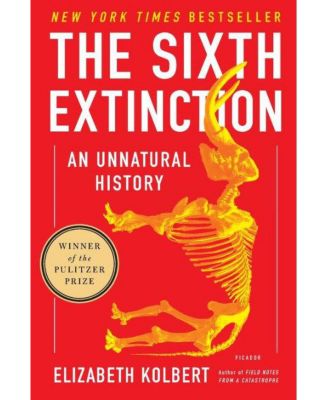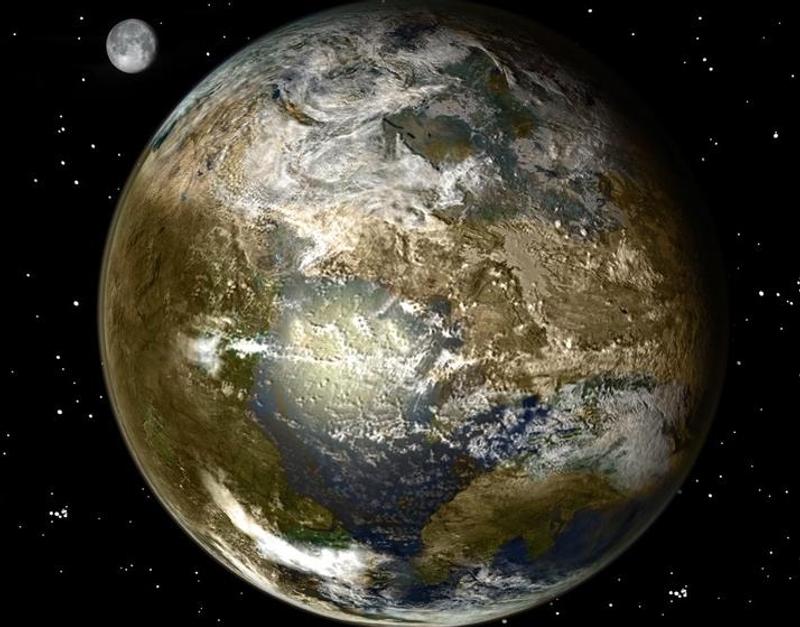The Sixth Extinction: An Unnatural History by Elizabeth Kolbert
Product details
Web ID: 18467982 reviews
Insightful and alarming
Elizabeth Kolbert, a Pulitzer Prize winning journalist and author, pulls you deep into the limestone to examine fossil records that span hundreds of thousands of years, carries you through the treetops of the species-rich tropics, and plunges you into the seas. As the planet has shifted over the millenia, what clues has it left us, and how can we use that to determine what, exactly, is happening to it now? There have been five monstrous extinctions since the planet’s inception (that we know of), and we are walking amidst the sixth. Kolbert covers incredible species—the great auk, mastodons, ammonites, army ants, the Sumatran rhino, and more—as well as incredible ideas—extinction, natural selection, impact theory, Pangea. I think this book is for people who seek to understand: (1) how the prior extinctions occurred and what can be done about the sixth; (2) the species that have disappeared and how researchers discovered their disappearances; and (3) how the concept of extinction emerged and evolved over time.
Recommends this product

Customer review from barnesandnoble.com
A Remembrance of Things Present
Ah, the good old days: remember cars that got maybe 13 miles per gallon, sci-fi movies about alien things crashing into Earth to be defeated by military know-how, big game hunting safaris with triumphant pictures, whale steaks on the new food menu, cute bleached coral and lacquered fish for home decoration, traveling abroad was exotic - almost a once-in-a-lifetime experience! Sure you do. And if you're still a little wistful for those times, Elizabeth Kolbert's 2014 book, "The Sixth Extinction," is not going to be very satisfying. It may sound like a new cinema offering but it is far, far from it. "The Sixth Extinction" is a series of personally crafted portraits of life in its many different forms in flux and, in some cases, ceasing to exist - even as we read the author's words. Drawing on her writing experience with "The New Yorker" Magazine, Kolbert blends knowledge, anecdote and eyewitness details to create a sense of authenticity so the reader feels like he or she is part of the experience. Those seeking more rigorous analysis and exposition should try Scientific American's collections such as the 2014 "Storm Warnings: Climate Change and Extreme Weather". Through thirteen chapters the author presents pictures of various species in crisis, the probable reasons for their present state of emergency and the efforts undertaken to aid and preserve them. Each chapter has a particular species focal point such as golden tree frogs in Panama, the American mastodon, graptolites in Scotland, coral colonies around Australia's Great Barrier Reef, declining biodiversity in the Amazon, Sumatran rhinos in U.S. zoos and new insights about relationship between Homo Neanderthalensis and Homo Sapiens in Germany. Interspersed in the initial chapters is the history of the development of various scientific approaches to understanding fossil remains, historical epochs, eras and periods, and the development of evolutionary theory, whether by catastrophe or gradual change (or "long periods of boredom interrupted occasionally by panic"). While still anecdotal, the latter chapters weave some interesting fact-based information, for example: - Earth has an estimated 50 million habitable acres, of which 27 million have been converted by people for multiple uses such as cities, housing, and pastureland. The remaining 23 million acres are roughly 60% for forests in which various species live and the remaining 40% are mountains, deserts, tundra, etc. - The various species on Earth are composed of two to seven million for insects, ten thousand for birds and five thousand for mammals, including people. - Amphibians are the most endangered group followed by reef corals, fresh water mollusks, sharks and rays, mammals and birds. Along the way, other startling observations emerge: biodiversity is declining not only due to the "old causes" such as hunted to extinction for various reasons but also new ones such as global warming impact on life-sustaining ranges, the loss of habitat space, the inability to regenerate a species due to slower reproduction rate and the rapid vulnerability to new diseases (fungal, bacterial or viral). All of these causes are now achieving a dark and unexpected synergy. Kolbert is presenting the current conditions as potential for a Sixth Major Extinction of the planet's species. In the prior roughly 500 million years there have been upwards of 25 periods of species extinction, of which five are considered to have been major ones due to breadth and probably rate of surrounding change. Nearly all of these were due to factors beyond the control of the inhabitants at the time: changes in chemical balances, glaciations and global warming due to Earth orbit wobbles, volcanic eruptions and asteroid impact leading to global cooling that killed off many of the dinosaurs 65 million years ago. What makes the concern for the next big extinction is that it may be triggered by us - very, very rapidly. At a speed of change far beyond anything that has happened before - be it global warming by burning millions of years of fossil fuels, by eliminating living space on land or in sea for other species, or by sheer carelessness. Shall we support initiatives for mitigating factors that we can affect such as global warming? Or shall we fiddle while home burns?
Recommends this product

Customer review from barnesandnoble.com


